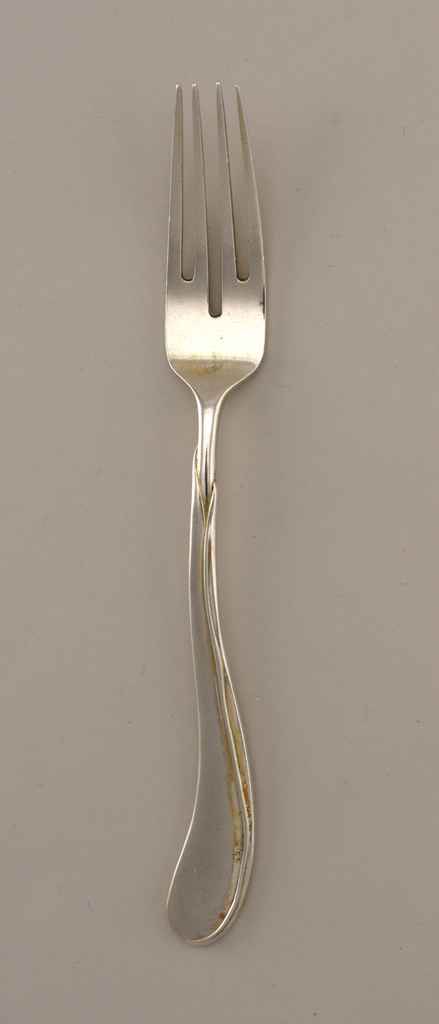This silver dessert fork from the “Tulip” pattern, was designed by Henrich Vogeler in 1898-99, and produced by the firm of M. H. Wilkens & Söhn in Bremen, Germany. Vogeler’s Tulip pattern is one of the most graceful German flatware patterns of the Jugendstil period, and this particular piece shows the pattern well. Vogeler, trained as...
Pewter, an alloy of tin and lead, used to bring to mind matte, anthracite-grey mugs, flasks, and tableware susceptible to serving up lead poisoning, in addition to whatever else the kitchen had to offer. In other words, anything but this lozenge-shaped, organic biscuit box, marked “KAYSERZINN”. This perception was changed when Engelbert Kayser created “KAYSERZINN”...

